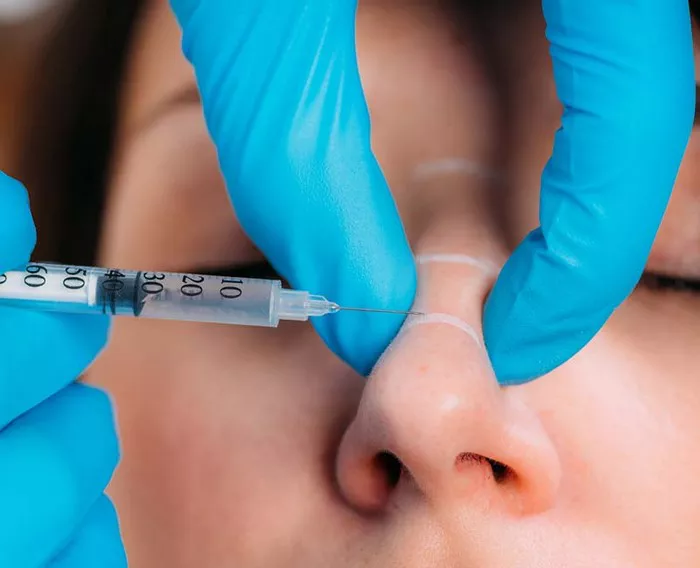In an effort to cut costs, women are using DIY injectables to plump up their pout at home.
Online, TikTokers have been advertising their self-injections of hyaluronic acid, a commonly used filler, to the dismay of doctors everywhere.
One woman boasted that her lips had “doubled in size for a cheaper price” using an at-home hyaluronic injection pen – which appears to sell for around $40 on eBay, depending on the seller – while others demonstrated how to use the device.
The alarming beauty trend coincides with a rise in cosmetic procedures, particularly among Gen Z. In 2022, hyaluronic acid filler injections will account for 4,883,419 cosmetic procedures, a 70% increase from 2019.
A shot can be expensive – patients shell out an average of $684 for the dermal filler, according to the American Society of Plastic Surgeons – making an at-home, low-cost method all the more appealing.
“I can understand someone seeing a product like this in a TikTok video or hearing from a friend of a friend who had a ‘good result’,” Florida-based Cleveland Clinic plastic surgeon Martin Newman said in a statement.
“Unfortunately, some people will try something without doing their homework simply because someone else did it first and had an acceptable result.”
The popular needleless device uses compressed air to push the hyaluronic acid through the skin, which Newman said “sounds pretty traumatic”.
“The first question you really have to ask is: How can you push a dermal filler – whose physical properties are that of a viscous gel, like Jell-O – through the skin?” he mused.
While similar devices are effective for delivering drugs or vaccinations, experts warn that this is not enough for dermal fillers.
“My concern is that the procedure is not controllable,” Newman warned, adding that the injector cannot control how deep the hyaluronic acid goes.
The Food and Drug Administration has previously warned consumers about the dangers of administering dermal fillers at home using needle-free devices.
Complications include blindness, stroke, tissue death or decay, bleeding, infection, scarring, skin lumps and discolouration.
“The FDA has not evaluated the safety and effectiveness of needle-free devices for the injection of dermal fillers,” the agency said. “The FDA also has not approved the marketing of needle-free devices for the injection of these products.”

